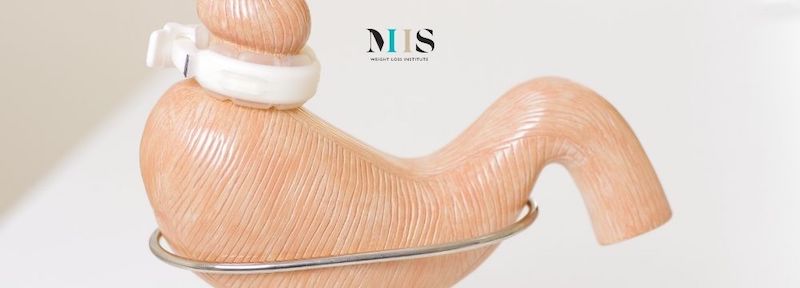Sleeve Gastrectomy

When the adjustable gastric banding system known as the Lap-Band was approved in the early 2000s, it was seen as a revolutionary surgical weight loss procedure. First, it did not alter the anatomy of the gastrointestinal system in any permanent way. Second, it was adjustable and fully reversible in cases of need. The idea was that patients who were hesitant to have a permanent bariatric procedure could have an option that gave them greater flexibility. However, of course, with greater flexibility comes some compromises, the biggest of which was the fact that it offered significantly lower weight loss potential versus stapled procedures such as a gastric bypass or gastric sleeve. Again, however, this was more than acceptable for many patients who did not want to “take the plunge.” The Lap-Band soon became a well-known name in households across the United States and around the world. It quickly became the second most popular bariatric surgery in the US.
Why don’t we hear about it any longer?
To fully answer this question, one must understand how the band works. A small silicone ring with inflatable pillows is placed around the upper portion of the stomach and tightened by adding saline. An injection port is placed on the abdominal wall, allowing for subsequent adjustment by adding saline to or removing saline from the band.
With this novel approach to restriction came some apparent issues. First, the horizontal aspect of the band increases the risk of band slipping out of place or eroding into the stomach. Second, the band could often be too tight or too loose, meaning the patients may have trouble eating properly or was able to eat too much. Third, there with always significant concern involving the injection port which could break, flip, or otherwise malfunction, requiring additional surgery.
In the few years after the Lap-Band’s introduction, it seemed the medium-term complication rate was somewhat higher than stapled procedures, but this became more apparent and more difficult to manage as time went on and patients had 7 to 10 years under their belts. Alongside this unacceptably high complication rate, stapled procedures became safer and more effective. In the year since, we have also learned more about how the human body reacts to stapled procedures such as the gastric bypass and gastric sleeve. We now understand many more hormonal and metabolic benefits that the stapled procedures offer, something that the band simply cannot.
Where we are today
Today, the Lap-Band system has changed ownership and is no longer a commonly performed bariatric surgical procedure. Its main commercial rival, the Realize band, which functioned in the same way, is no longer available after being discontinued just a few years after it was introduced. Instead, specialized practices such as ours are routinely removing adjustable gastric bands and replacing them with a stapled procedure to relieve complications and / or restart a stalled weight loss process. This is known as a bariatric conversion.
What are my options?
If you are considering bariatric surgery to address a weight issue that may have plagued you for years or even decades, congratulations, you have taken an important step toward changing your health and your life. The next step is to understand more about how bariatric surgery fits into your situation and that can be achieved with a consultation with one of our bariatric surgeons. You can also watch our online bariatric surgery seminar to understand more about the procedures available and how they can benefit you. We look forward to helping you in the weight loss process and encourage you to contact us to schedule a consultation.









